Deep Learning is often defined as an important element of Machine Learning and a subset of Artificial Intelligence (AI).
Deep Learning involves creating software whose task is to mimic and simulate the behavior of the human mind, in particular, learning processes and information processing.
Deep Learning is one of the most forward-looking, dynamically growing markets, sectors of knowledge and work which finds its use in an increasingly broader range of industries, markets, products, and services.
For example, if you've heard about autonomous cars, then Deep Learning hides behind the development of this technology, its popularization, and its growth. In fact, an enormous change happened right before our eyes.
The technology, which some time ago wasn't expected to be a huge success, gradually becomes very popular and increasingly often is seen as a true game changer in the automotive industry.
The automotive industry is not the only one that focuses on Deep Learning. The use of Deep Learning technology and solutions will encompass a growing range of human activities.
Deep Learning is used wherever collecting and analyzing vast amounts of data is vital.
Deep Learning technology is extremely useful in statistical studies and in creating models of the course of a phenomenon or for prediction. Deep Learning is increasingly widespread.
You can encounter it not only while driving cars but also while using the help of various digital assistants.
It's offered on websites and on devices such as TVs.
What is Deep Learning? What is the meaning of Deep Learning? What are artificial neural networks? How does Deep Learning work? What other uses can neural networks have?
These are the most important questions that we'll pose today. And which we'll answer as simply as possible.
We invite you to read on!
A brief history of Deep Learning
The history of Deep Learning is inextricably linked with the development of computer science, computing power, and the availability of vast amounts of data. It's true. But it's also true that its history is not as short as you may think.
The origins, basis of the Deep Learning concept can be traced back to the 1950s when Alan Turing created his own machine for learning.
Turing's contribution to the development of artificial intelligence, machine learning, and Deep Learning is genuinely invaluable.

By the way, we recommend you a concise article about his contribution, "Alan Turing and the beginning of AI."
These pioneer, breakthrough, and canonic ideas, conceptions, and notions of Alan Turing constitute a milestone in the development of this branch of knowledge.
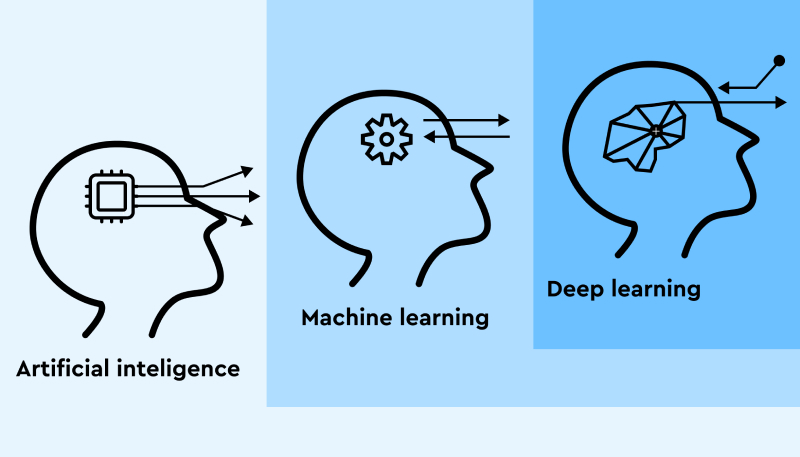
In the decades that followed, programs, algorithms, solutions, and concepts were created, and their goal was to "teach machines how to learn and think independently."
It's worth remembering that neural networks have existed as a concept, a particular technology, for several decades.
Breakthrough moments in the development of Deep Learning, as you can read in the article "A Brief History of Deep Learning," include, among others:
- First algorithms for Deep Learning created by Alexey Ivakhnenko
- First "convolutional neural network" created by Kunihiko Fukushima
- FORTRAN code for backpropagation written by Seppo Linnainmaa
- Mapping and recognition system for similar data developed by Dan Cortes and Vladimir Vapnik
- Long Short-Term Memory developed by Sepp Hochreiter and Jürgen Schmidhuber.
With that said, it's worth adding that even the boldest ideas wouldn't be possible if not for the development of the computing power of processors, which today can process enormous amounts of data in a very short time.
Hence, we had to wait for another breakthrough in Deep Learning. It happened in 1999 when the Graphics Processing Unit (GPU) was developed, which increased the computing power of graphics processors.
Along with the increase in the computing power of processors, Deep Learning was less and less considered a curiosity and more often a promising technology that may turn out to be a breakthrough in many industries.
These intuitive beliefs very quickly turned out to be true.
It's not surprising that huge companies (e.g., Google) started to invest in the development of Deep Learning, which significantly sped up the growth of this technology and also changed the attitudes toward it.
Deep Learning — what is it?
Let's go back to our main question. To understand the benefits and scope of using Deep Learning technology, it's necessary to define, explain and describe it exhaustively.
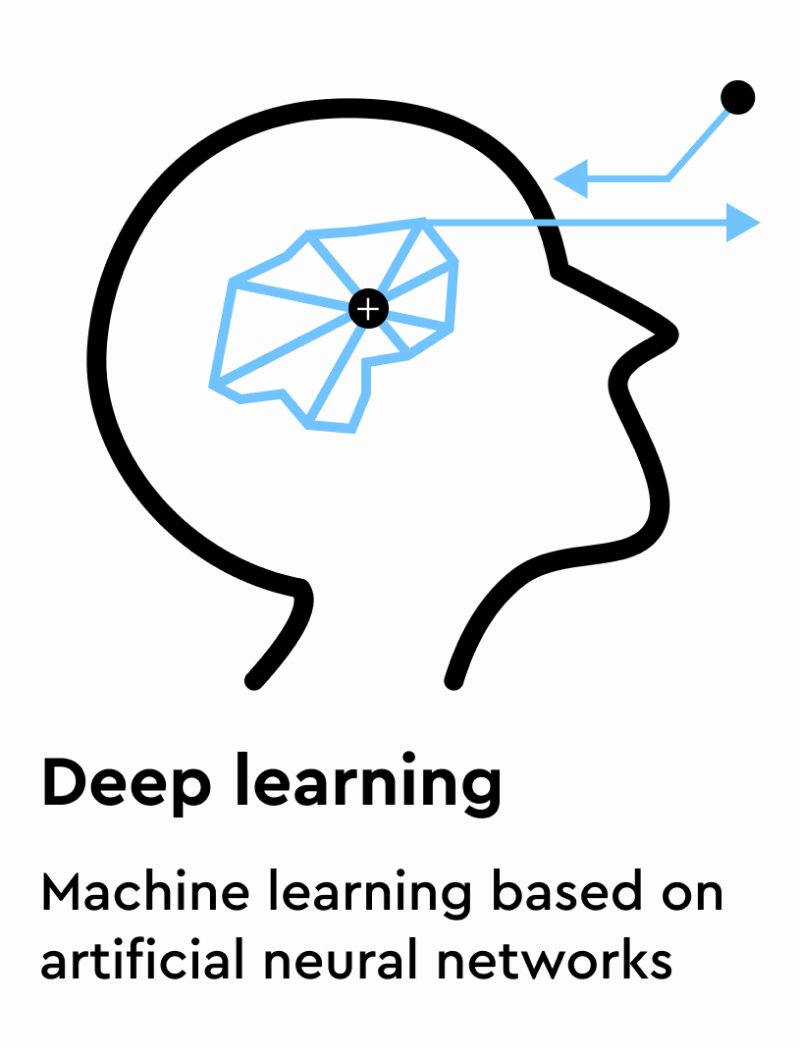
Deep Learning is a type of machine learning in which a computer analyzes algorithms and their results to "learn" how to improve processes and create new ones.
To have a clear understanding of the relationships and overlap of concepts, let us add that Artificial Intelligence (AI) is a broader term in which Machine Learning and Deep Learning are subsets.
Generally speaking, artificial intelligence and machine learning rely on the ability to recognize patterns and then, based on data observed in the past, are used to predict future outcomes.
The main advantage of using artificial intelligence, neural networks, machine learning, and Deep Learning is the ability to automate many processes and perform analytical and physical tasks without human participation.
However, Deep Learning, unlike some algorithms of machine learning which are limited in their ability to learn, can improve its efficiency thanks to access to more data.
Deep Learning also differs from machine learning in the type of data and learning methods. Furthermore, Deep Learning, in contrast to machine learning, doesn't require pre-processing of data.
Deep Learning algorithms can independently acquire and process unstructured data and automate feature extraction.
For example, suppose we would like to isolate photos of cats and dogs in a set of photographs; in the case of machine learning, it's necessary to determine distinctive features that allow it to distinguish one species from another.
When using Deep Learning, this is not necessary. Deep Learning algorithms distinguish these features by themselves.
Algorithms used in Deep Learning allow us to create hierarchical models similar to human thought processes.
Deep Learning involves creating neural networks that, instead of organizing data and performing an array of defined equations, determine basic data parameters and recognize patterns using multiple processing layers.
A quote from the article "What Is Deep Learning? 3 things you need to know" is a good summary for this part of our discussion. Namely, in Deep Learning, features are automatically extracted from images.
In addition, Deep Learning performs "end-to-end learning" – where a network is given raw data and a task to perform, such as classification, and it learns how to do this automatically.
And here, we arrive at the next crucial question.
How does Deep Learning work?
Deep Learning, in most cases, is based on neural network architectures.
Neural networks in their structure are similar to the human brain and consist of artificial neurons — nodes.
We can distinguish three types of nodes:
- Input nodes
- Hidden nodes
- Output nodes.
Input and output nodes in a neural network are called visible layers.
An input node is where data are entered for processing, and the output node is where the final prognosis or classification occurs.
A network is deeper the more nodes it has. An essential characteristic of neural networks is that performance increases as the network deepens.
Nodes are learning how to translate input data into a complex representation which, with every subsequent level, becomes a little more abstract. Output data from one node become input data for another one.
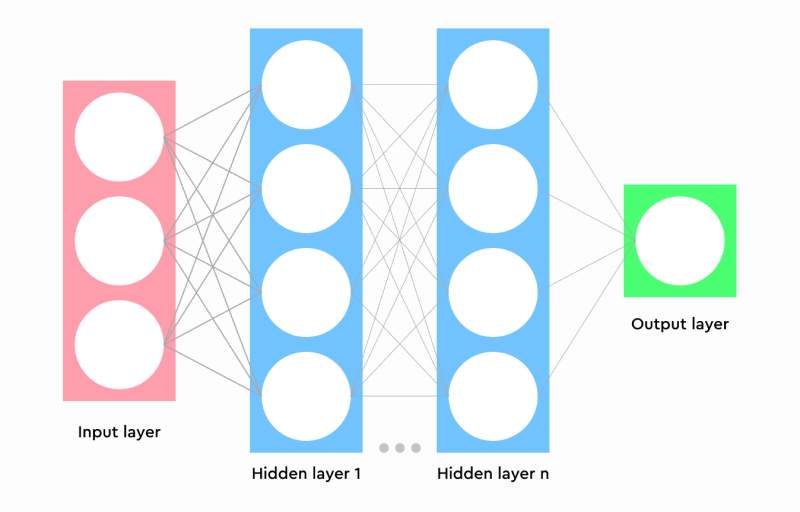
In other words, in a neural network, signals move between nodes and assign an appropriate weight to them.
A node with more weight has more influence on the next layer of nodes. The last layer compiles these input data to create output data.
Although neural networks have been known for several decades, it was not until recently that they began to be used on this scale due to a simple reason.
Deep Learning requires a tremendous amount of computing power to learn and a lot of data, allowing it to obtain precise results.
The learning process is time-consuming because the system gradually improves its model.
Rapid technological development has made Deep Learning grow dynamically in recent years.
The most popular Deep Learning algorithms include the following:
- Convolutional Neural Networks (CNNs)
- Long Short-Term Memory Networks (LSTMs)
- Recurrent Neural Networks (RNNs)
- Generative Adversarial Networks (GANs)
- Multilayer Perceptrons (MLPs)
- Deep Belief Networks (DBNs).
CNNs are used to identify satellite images, process medical images and detect anomalies.
LSTMs are often utilized to recognize speech, compose music and develop pharmaceutical products.
RNNs are used to recognize handwriting and for machine translation.
GANs are used to create animations, photos of human faces and render 3D objects.
MLPs are utilized to create software for speech, image recognition, and for machine translation.
BDNs are used to recognize images and videos and capture movement.
If you need to broaden your knowledge, we recommend reading the article "Top 10 Deep Learning Algorithms You Should Know in 2022."
You can find in it a detailed discussion of individual algorithms — in particular, how they work, their scope of use, and their utility.
Why is Deep Learning important?
The most straightforward answer to the above question should read as follows: Because Deep Learning is exceptionally useful and profitable for business.
If you need a more detailed justification, then it should look like this: Deep Learning technology has brought a brand new level of capabilities for classifying, recognizing, detecting, and describing data through algorithms and neural networks.
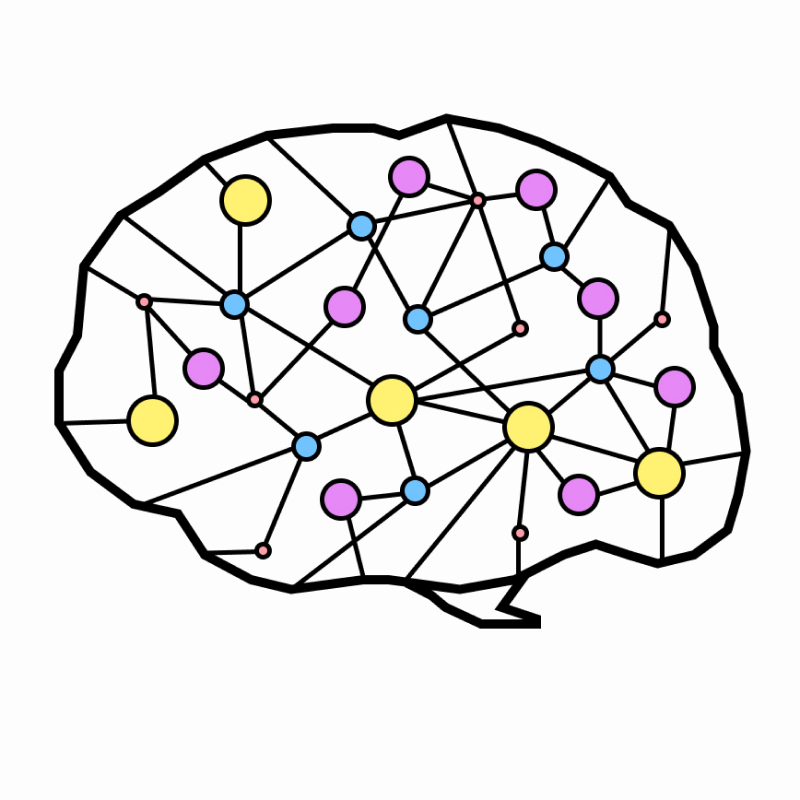
Deep Learning is increasingly and successfully being used in industries where there is a need to develop non-numeric data.
Deep Learning is extremely useful for the following:
- Speech recognition
- Image recognition
- Translation of texts.
The development of Deep Learning, as we mentioned, goes hand in hand with the development of computing power and the availability of data.
And it's also connected to the development of distributed cloud computing and graphics processing unit (GPU). And when it comes to these domains, we also deal with very dynamic growth.
Another variable that influences the uses of Deep Learning technology, its future, and the prospectiveness of its development is the changes in human interaction with computers, applications, and software interfaces.
The traditional interaction with the keyboard and mouse is increasingly being replaced with tactile interactions. And the classical operation with a mouse cursor is replaced with gestures.
More and more often, interaction also means verbal communication, giving commands with words aimed at a device.
Ever since Deep Learning proved helpful in cosmology, pharmaceuticals, symptomatology, genetics, and motorization, its future has become brighter.
All the more so since civilizational challenges such as global warming will require new technologies, including cognitive, analytical, and predictive tools, which not only will have to handle large amounts of data but also offer an appropriate level of accuracy and relevance.
The development of robotics, the Internet of Things, applications, biomedical technologies, criminology, and many, many more fields will depend mainly on the development of Deep Learning technologies.
What are the current uses of Deep Learning?
Deep Learning is finding more uses in various industries. It's a fact, a trend, and for many of them, the present or near future.
Deep Learning algorithms are increasingly often used in:
- E-Commerce
- Finance
- Medicine and healthcare
- Pharmaceutics
- Security
- Logistics and transport.
According to the research result published in the report "2020 State of AI Survey Report," organizations and companies, to keep their competitiveness, will be almost forced to use machine learning, Deep Learning, and automation of robotic processes and services.
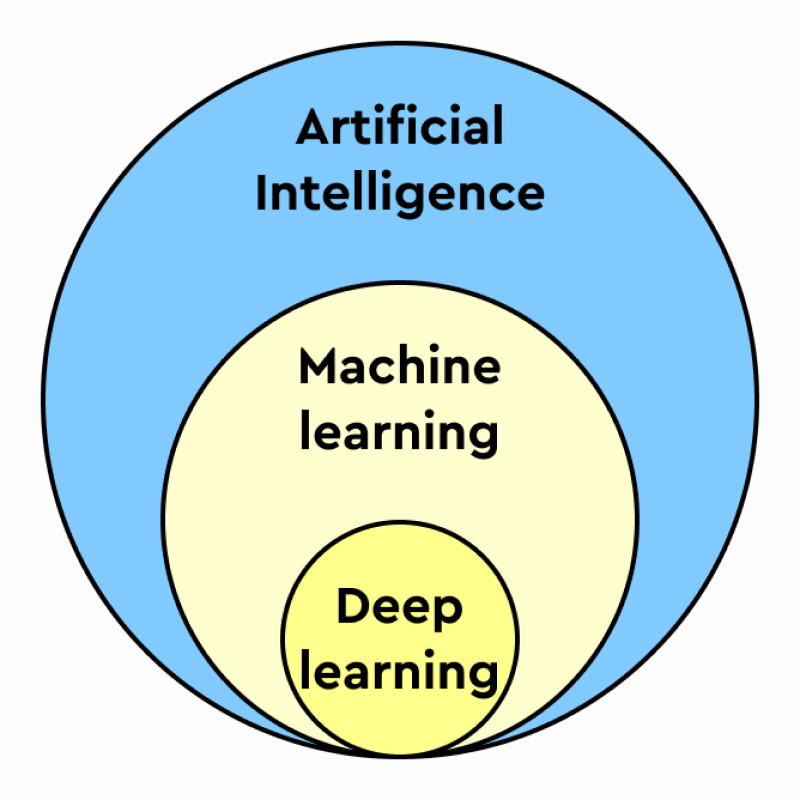
And to a large extent, this is already happening.
53% of companies that already use the benefits of artificial intelligence (AI) plan in the near future to implement Deep Learning solutions.
It's not surprising.
Deep Learning (thanks to the use of deep neural networks) makes it possible to:
- Analyze various use cases
- Prototype
- Model patterns
- Make predictions (e.g., purchasing predictions — the case of recommendations in Amazon and Netflix)
- Optimize the learning process
- Identify
- Diagnose
- Estimate risk (e.g., in the finance industry)
- Deliver solutions
- Analyze moods
- Spot anomalies.
The finance industry uses the potential of Deep Learning to, among others, estimate credit risk and automate back-office operations.
Government agencies and public institutions often use Deep Learning to identify and classify images.
At airports, this kind of technology is very helpful in increasing the security level, speeding up operations, and automating the management of lines.
In robotics, Deep Learning helps robots to recognize and react to their environment and changes occurring in it.
The future of robotics and Deep Learning is the increased use of robots for independent work and assisting people in their daily lives.
In agriculture, Deep Learning means the support of machines, thanks to which they can distinguish between plants and selectively spray them — with fertilizers or herbicides.
More and more often, Deep Learning technology is used for optimal and accurate harvesting.
In medicine, Deep Learning is used for imaging, diagnosing, and predicting health issues.
Deep Learning also finds its use in politics, and to be more precise, it's used for calculating the probability of electoral success or failure.
That is, of course, only a snippet, modest, illustrative list which only approximately shows how broad the scope of use of Deep Learning can be.
The capabilities of Deep Learning are constantly expanding just as the efficiency, effectiveness, and cost-effectiveness of the technology itself are improving.
It's impossible to write in one article about all uses of Deep Learning, traditional analytical uses, cognitive computing, Deep Learning technologies, time series analysis, and new streaming data processing methods.
However, it's certainly worth adding that new classes of neural networks continue to emerge and are constantly being developed. Undoubtedly we will write and read more about new Deep Learning techniques.
The influence of Deep Learning (innovations in the construction of neural networks) is already very significant.
What is Deep Learning? Summary
- Deep Learning is often defined as an important element of Machine Learning and a subset of Artificial Intelligence (AI).
- Deep Learning specialists create software whose task is to mimic the human mind.
- Deep Learning is mainly about mimicking the learning process and processing of data.
- The history of Deep Learning is inextricably linked with the development of computer science, computing power, and the availability of vast amounts of data.
- The origins of the Deep Learning concept can be traced back to the 1950s when Alan Turing created his own machine for learning.
- In the decades that followed, programs, algorithms, solutions, and concepts were created, and their goal was to "teach machines how to learn and think independently."
- Large companies (e.g., Google) have been investing in the development of Deep Learning for quite some time now, which significantly sped up the development of this technology.
- Deep Learning is a type of machine learning in which a computer analyzes algorithms and their results to "learn" how to improve processes and create new ones.
- Artificial intelligence and machine learning rely on the ability to recognize patterns and then, based on data observed in the past, are used to predict future outcomes. They draw heavily on the basics of cognitive computing and are a form of network learning based on the use of available data.
- Deep Learning differs from machine learning in the type of data and learning methods.
- Deep Learning, in contrast to machine learning, doesn't require pre-processing of data.
- Deep Learning algorithms make it possible to create prediction systems; they can independently acquire and process unstructured data and automate the extraction of features — they're a type of automatic learning.
- In most cases, the central element of Deep Learning is based on neural network architecture.
- Neural networks in their structure are similar to the human brain and consist of artificial neurons — nodes.
- Input and output nodes in a neural network are called visible layers.
- An input node is where data are entered for processing, and the output node is where the final prognosis or classification occurs.
- Thanks to this, Deep Learning far outperforms traditional modeling methods.
- Deep Learning technology, thanks to a massive amount of computing power of computers and an increased amount of GPU computing power, took the ability to classify, recognize, detect, and describe data through algorithms and neural networks to a whole new level.
- The development of written text analysis, robotics, the Internet of Things, applications, biomedical technologies, criminology, and many, many more fields will depend mainly on the development of Deep Learning technologies.
- Deep Learning algorithms are increasingly being used in E-Commerce, finance, medicine, healthcare, pharmaceutics, security, logistics, and transport, in which their ability to continuously improve, carry out analytical processes, and achieve high accuracy is a crucial advantage.
- Machine Learning and Deep Learning allow us to analyze various use cases, prototypes, model patterns, make predictions, and optimize processes.
- The widespread use of deep neural networks includes identifying, diagnosing, and estimating risk.
- Deep Learning also includes delivering solutions, analyzing moods, and spotting anomalies.
- It's safe to assume that there will be more and more practical uses of image recognition and methods for using Deep Learning.






